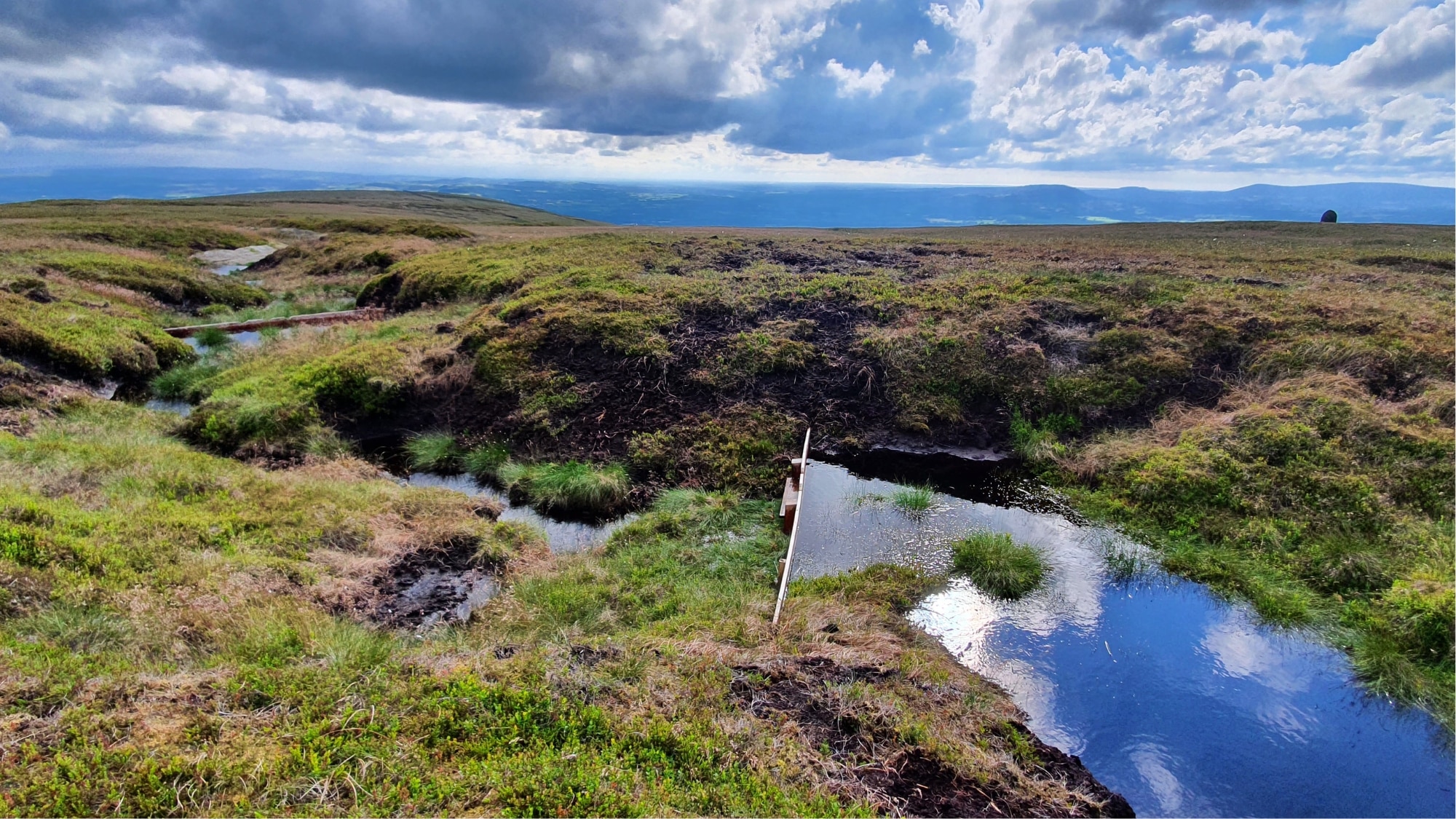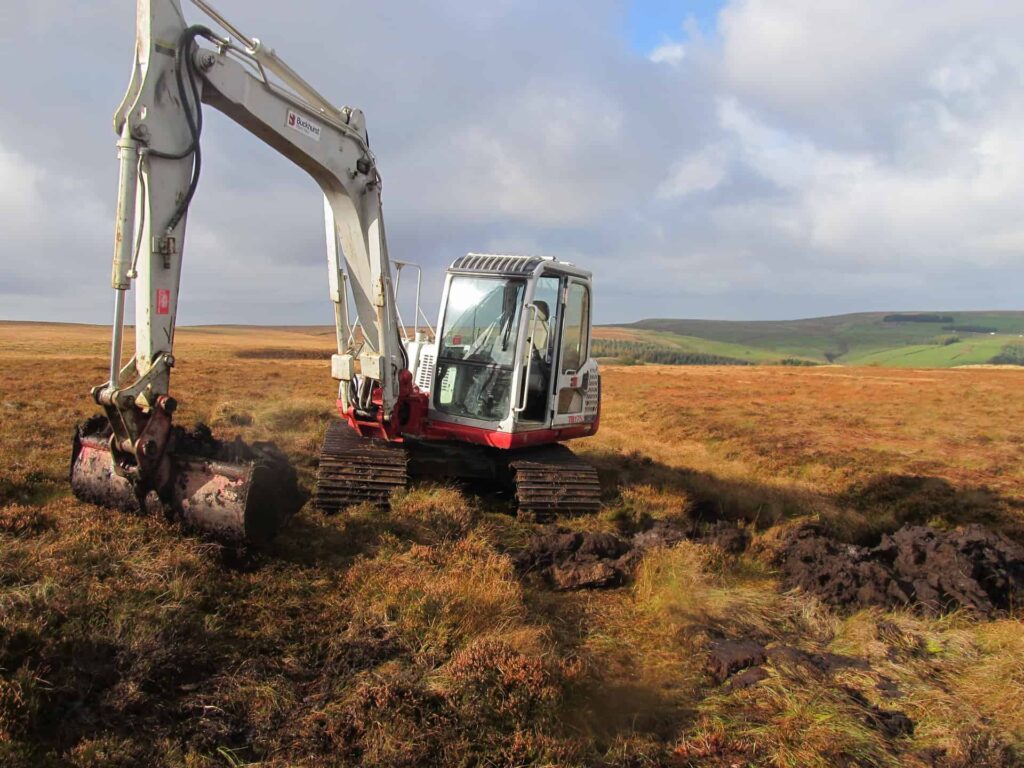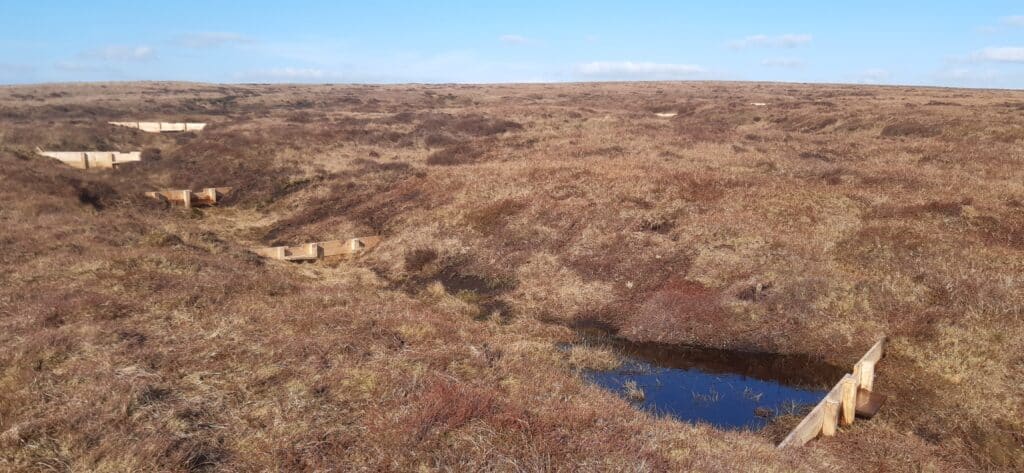
Pendle Hill Peat Project
Thanks to additional funding, this project has had an extension! Our contractor for the second round of the work, Ben Scott, is currently restoring even more peat on Pendle Hill.
Mearley Brook begins its journey on Pendle Hill, before flowing into the River Ribble near Clitheroe. Although this is only a short stretch of water it encounters many problems and the brook is classed as being in poor condition. One of the main problems with Mearley Brook is that livestock overgrazing and recreation on Pendle Hill has caused severe peat erosion. This is then resulting in high levels of peat sediment entering the brook, negatively affecting water quality.

As part of the Ribble Life for Water project we will be restoring some of the eroding peat gullies at the top of Pendle Hill. This will not only help the peat to build back up and regenerate, but it will also prevent erosion. In turn, this will stop peat sediment entering Mearley Brook.
Work to prevent the issues is also occurring. Extensive improvements to the access and footpaths on Pendle Hill will direct people towards the designated footpaths. By reducing the number of walkers on the peat and we will reduce the amount of erosion. The project will also offer advice, guidance, and soil testing to farms. This aims to further improve the water quality, help the brook it reach it’s full potential, and support a greater range of wildlife.
Why restore pendle Hill’s Peat?
This work is important because peat is an excellent carbon store. Despite peatlands making up as little as 10% of the UK’s landscape, our peatlands alone hold 3.2 billion tonnes of carbon. This is more carbon than the combined forests of Britain, France, and Germany!
Peat is also beneficial for water management. It holds 20 times it’s own weight in water so is excellent for slowing the flow of rain water and reducing flood risk. Additionally peat is excellent at filtering water, with 70% of our drinking water coming from peatland river catchments. If that isn’t enough peatland also provides habitats for a diverse range of rare and unusual birds, insects, and plants!
It’s important to protect our peatlands. Not only are they vital for our landscapes and it’s inhabitants they are almost irreplaceable, taking centuries to form. The creation of peat happens when dead vegetation is trapped in a partly decayed state in waterlogged land. This matter accumulates and compresses, capturing the carbon from the trapped vegetation over hundred of years. If undisturbed and healthy peat will continue to slowly grow, capturing carbon as it does so.

However, badly managed and neglected peat bogs can do the opposite. As the vegetation on top of the peat dies back (usually due to excessive footfall from people or livestock), the bare peat is exposed. This makes the peat much more susceptible to becoming washed away in the rain, or drying out in warmer weather and blowing away. When this happens the peat releases carbon into the atmosphere. This is why it is so important to care for our peatlands.
WHo made this project possible?
The is a partnership project with the Pendle Hill Landscape Partnership. The first round of work was completed by JVT Construction. The contractor for the second round is Ben Scott.
Ribble Life for Water receives £1.5 million from Environment Agency and Natural England. They are jointly administering the Water Environment Grant. This is a fund provided by the European Agricultural Fund for Rural Development to improve the water environment in rural England.
You can read more about peat in the England Peat Action Plan. This document details the government’s long-term vision for the management, protection and restoration of our peatlands, so that they provide a wide range of benefits to wildlife, people and the planet.


